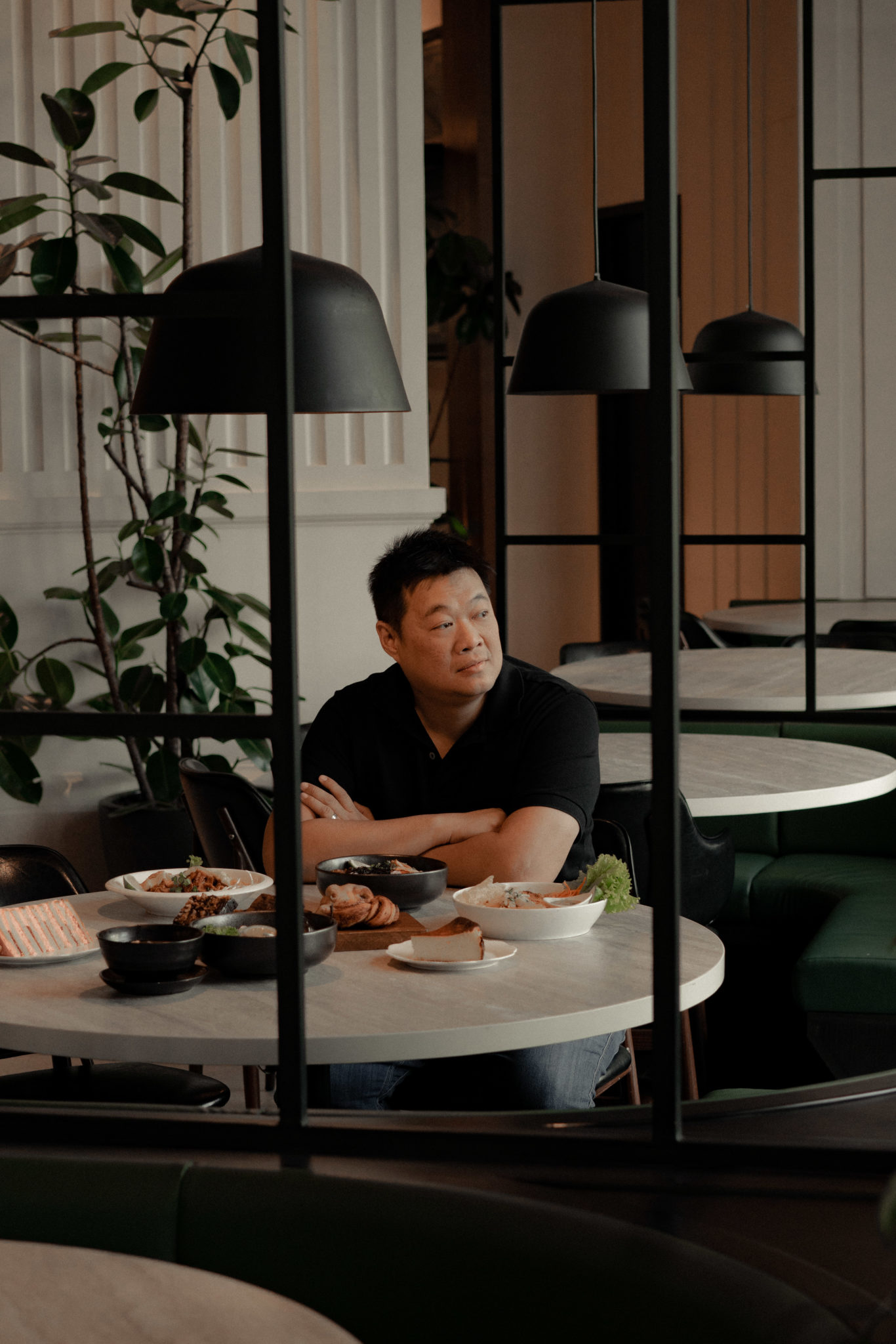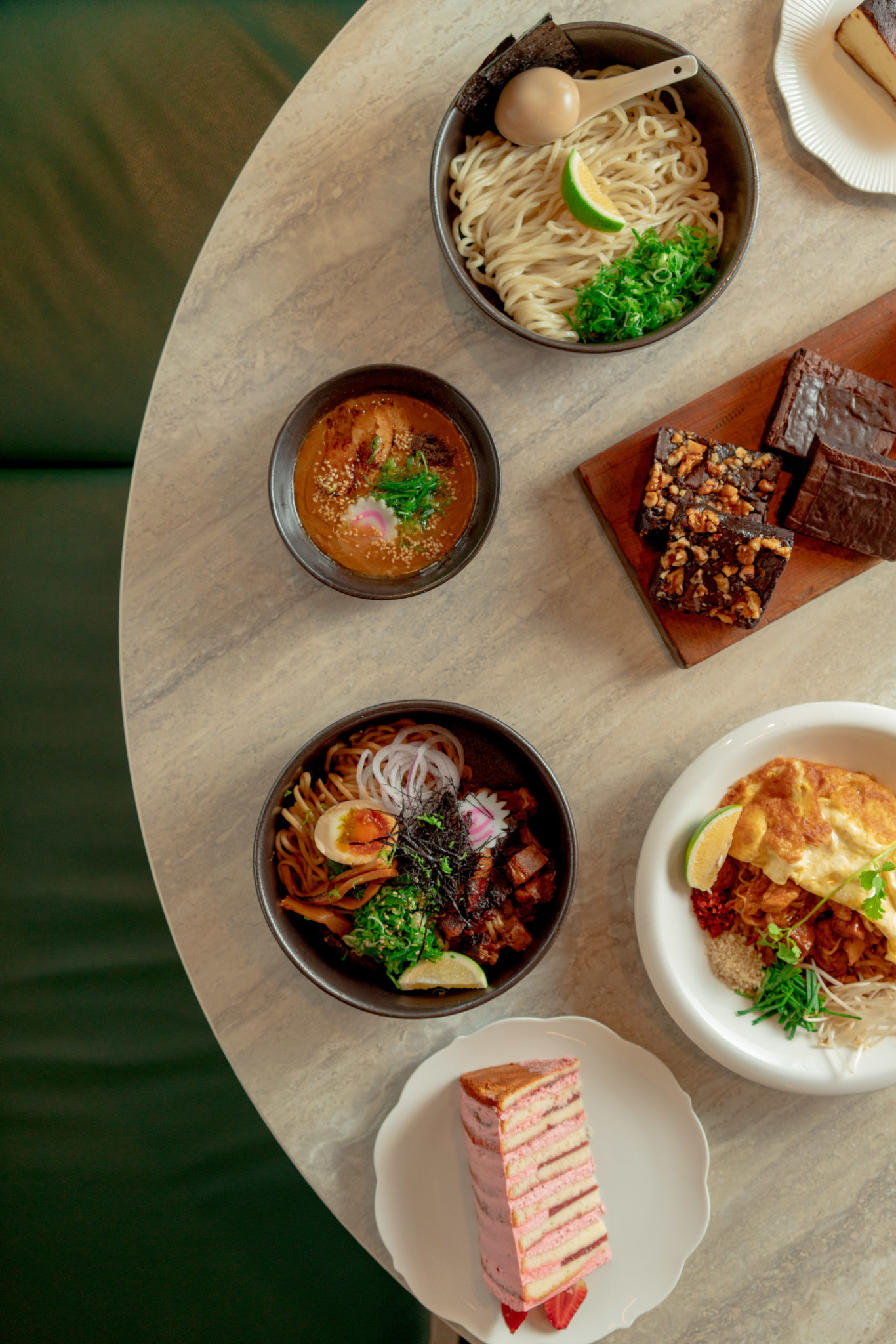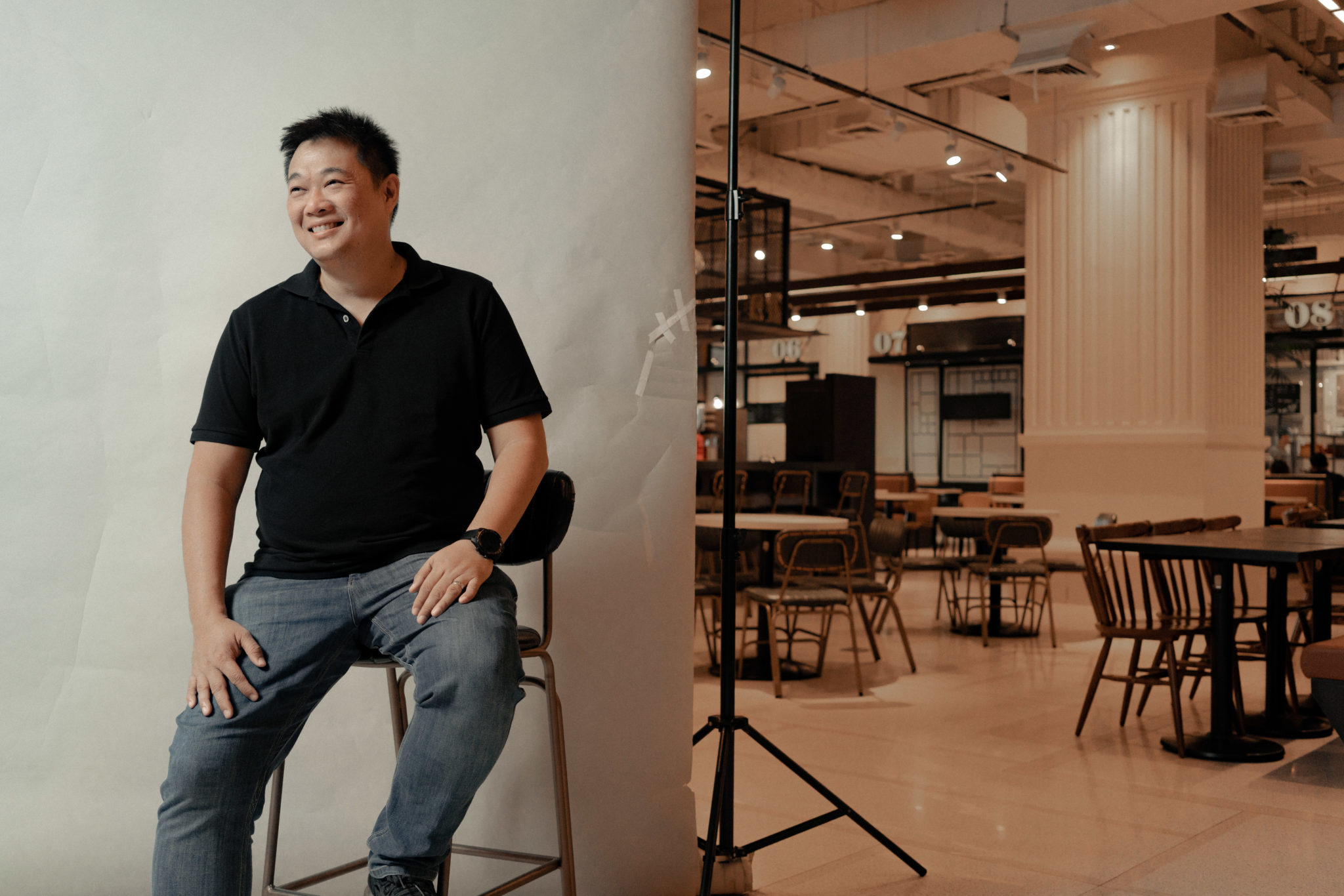It was a decade ago when Charles Paw opened his first restaurant. He was already adept in building a business, what with a string of stores selling gadgets and electronics, but his love for food brought him to an entirely new venture.
Travels to Japan lent him thoughts of bringing authentic ramen to the Philippines. But when he opened the now defunct Ramen Bar in Eastwood, Paw remembers how patrons would lament on how short the menu was.
“We found a chef who would be able to execute it, but I think during that time, people didn’t really appreciate restaurants specializing in one dish. I remember when we opened, nagagalit ‘yung mga tao, na ‘bakit ito lang ’yung menu ninyo, ramen lang? Magsara na lang kayo!’ They were looking for all-around Japanese fare because that was their idea of a Japanese restaurant.”
The market wasn’t ready for such a concept, but, fast forward to the present day, what Paw envisioned has become the trend. “Now, when people see you specializing in one dish, alam nila it’s good.” Paw’s growing empire reflects what he began a decade ago—a restaurant meticulously designed to be as distinctive and memorable as its menu.
Innovating constantly
Paw’s restaurants are under two main groups, Tasteless and Lowbrow. For a clearer picture on how expansive Paw’s restaurant empire is, consider these facts: Tasteless has around 10 concepts—EYB Osaka, Hanamaruken, Hole in the Wall, Kushikatsu Daruma, Le Petit Souffle, Pizza Express, Poison, Scout’s Honor, The Grid Food Market (with Workshop by LPS and Tsukemen concepts also by Tasteless), and The Wurst. Lowbrow has six concepts to its name. There’s Bad Bird, Flowerboy, Fowlbread, also Hole in the Wall, The Beef, and Wrong Ramen.
Their growth was not part of Paw’s vision when he entered the food scene; it was just him listening to what the patrons needed at any given time. He adds that the main difference between the two are the partners and chefs involved, with him being the unifying factor as their founding partner. “A few years after opening Ramen Bar, I met Dwight Co of Pepper.ph. He was my first partner in the business. We decided to open a burger steak concept, Umami Hambaagu. That was my first project with him.”
“Design helps because the industry is really competitive,” Charles Paw says. “But our main focus is still the food. We avoid turning into one of those restaurants that are flashy—you Instagram your food and you don’t come back.”
His partnership with Co, managing partner and design partner of Lowbrow, led him to a side of the F&B industry that was oftentimes taken for granted—design. But now with word of mouth being taken over by social media presence, making your establishment as Instagrammable as possible has become part of the game.
“Design helps because the industry is really competitive,” Paw says. “If you have good design, it makes you stand out. But our main focus is still the food. We avoid turning into one of those restaurants that are flashy—you Instagram your food and you don’t come back. The food and value for money are still the most important factors.”

That importance is best represented by Paw’s brainchild, Hole in the Wall. When its doors opened, patrons were taken aback—in a good way—by chairs that weren’t the standard plastic or steel found in food courts and décor with animal heads and planters. It’s often credited for starting the food park craze, albeit being the first one of its kind in Manila.
Stalls with a limited, curated menu are usually found in such food halls to give patrons options. But while it seemed like a genius idea, Paw says it wasn’t the original plan. “We got this really big space in Century City Mall, and the idea was first to just be the landlord. But I wanted to build something nice, and then lease it out. But ang hirap maghanap ng tenants—sayang naman na we made it really nice, tapos kahit sino kukunin for it. So I decided to open almost everything by myself. So that’s when I decided to research kung sino mga sikat na chef now, negotiated with them, formed friendships and partnerships with them.”
With Hole in the Wall, another food hall and more partnerships were formed to create The Grid Food Market in Power Plant Mall. Opened just last July, it boasts 15 concepts to comfortably cater up to 330 patrons at a time, Paw brought in his tried-and-tested formula but with a twist: A highly decorated food hall, well-known chefs managing and lending their name to each stall, but the food remains in the spotlight. “We decided that we needed a bit of everything in this space, everything can’t be the same. There’s something for everyone, and we tried to get the best chef from each field.”
Wearing different hats
To be clear, Paw isn’t a chef and he doesn’t dabble in it or pretend to be one. He knows that his love for food can only get him so far, so he’s been smart about it. Rather than being a know-it-all, he surrounds himself with the expertise and knowledge he needs, while knowing where he could be most useful.
“I know my strengths,” Paw says. “We’re more on operations, on running the business. We handle the branding, the design. When it comes to the food collaboration, hindi siya, ‘ito ‘yung gawin mo, ito ‘yung gusto ko.’ The creative side is best left to the chef. I let them do what they’re good at, and sa amin naman, we’ll just advise, like ‘Remember to stick to our target price, we have to [watch] our food costs, what you sell needs to last for a few days’. Mga ganoon. Like our setup with Miko [Aspiras], for example; he decided on the menu, he makes me taste, I give some comments, that’s it. I think that’s why our partnerships last.”
Aspiras, the chef behind Le Petit Souffle and Scout’s Honor, attests to Paw’s collaborative spirit, saying that the latter is “the most supportive human being! We also sometimes tolerate our creative differences as a creative pastry chef; he’s open to any idea and up to trying out different things. But at the same time, he reminds me to learn the business side; we constantly challenge each other with new ideas on how to run a business. I’ve learned how to work within the team.”

Food stylist Kat Jao recalls a project she had with one of Paw’s earlier concepts, which turned into her becoming the research-and-development chef for his group of restaurants for a period. “His support and confidence in the young creative ones made it easy and fun working with him. He was open to every idea you had, would expose you to environments that would aid in learning more about different cuisines, and was always there to support crazy ideas, as long as it had potential. With all these, you would really want to give your best when working with him.”
“When closing a restaurant, usually we try for maybe six months at least. If it doesn’t work, change the menu, change the concept. Minsan maganda ’yung location pero mali ’yung concept or’yung concept hindi bagay sa area—so we learned that we have to be quick to change. We have to fail quickly, and recover fast,” says Charles Paw.
Kathy Molina, vice president for operations at Lowbrow, has been with the company since 2013, and has seen Paw in action up close. “During openings, you would see him making rounds, from table to table, because I think he has this innate need to really listen to his market and know what it thinks or wants, so that moving forward we not just adapt to those but be a couple of steps ahead of the market. I think that’s what Charles brings to the table. He’s a really good salesperson and an even better listener. More importantly, he is able to show us those skills.”
Beyond original concepts, Paw has two establishments that hail from two countries he learns from the most. “For Hanamaruken, favorite ramen place ko ‘yun sa Osaka. We would go there, kinukulit ko sila almost every year to open in the Philippines. We would always remind them that we’re interested, and tell them what we’re doing in Manila. Nakita nila siguro ‘yung progress, so pumayag. Never pa sila nag-open overseas, we’re the first. For Pizza Express, they’re a big chain, 500 stores around the world—it’s a learning experience and an exchange of ideas to have them here.”
Overcoming setbacks

Paw’s been on a lucky streak so far this year, and the successes outshine the restaurants that closed shop—Cuba Libre, Recession Coffee, and Ping Pong Diplomacy closed to little fanfare this year, but Paw seems to have learned to detach from failures. “Sobrang naging overconfident kami with Ping Pong Diplomacy. We thought na kahit alanganin ’yung location, if we build it, people will come. Hindi pala ganun. I think the concept was really not suitable for a mall environment. When closing a restaurant, usually we try for maybe six months at least. If it doesn’t work, change the menu, change the concept. Minsan maganda ’yung location pero mali ’yung concept, or ’yung concept hindi bagay sa area—so we learned that we have to be quick to change. We have to fail quickly, and recover fast.”
“Be clear about your target market. Gusto mo ba gumawa ng pang-masa naconcept, or do you want something chef-driven? You have to be really clear, and focus on it. Hindi ka pwede kalagitnaan, I want to build a chef-driven restaurant, but I want to have 10 branches, or magbubukas ka ng casual restaurant tapos may tasting menu ka. Impossible. It doesn’t work that way. Kung hindi kasure kung anong gusto mo, ‘yung customers mo, malilito rin. You can’t have it all,” says Charles Paw.
Time is of the essence in the F&B industry, and with Paw’s empire, they’re working in warp speed. In a mere six months, there will be restaurants popping up and expansions happening.
“It will be a busy time. We’re expanding The Grid to add five more stalls and 180 seats, so that will total to 20 concepts in the space. We’re bringing in Robby Goco and Nicco Santos, and we’re talking to a few more chefs to make the lineup really solid. There are four more Bad Birds, two more branches of Pizza Express and Scout’s Honor, and two more branches of Hanamaruken. And we’re opening a pop-up restaurant that will change every quarter downstairs [in Power Plant, Rockwell] called The Dirty Kitchen. This is a nice location to test that concept.”
Paw remains unfazed with both the closings and the recent string of successes, saying that they’re all simply doing the best they can do. He does share some advice for those who want it: “Be clear about your target market. Gusto mo ba gumawa ng pang-masa na concept, or do you want something chef-driven? You have to be really clear, and focus on it. Hindi ka pwede kalagitnaan, I want to build a chef-driven restaurant, but I want to have 10 branches, or magbubukas ka ng casual restaurant tapos may tasting menu ka. Impossible. It doesn’t work that way. Kung hindi ka sure kung anong gusto mo, ‘yung customers mo, malilito rin. You can’t have it all.”
Bearing in mind Paw’s track record, it’s best to take his advice and run with it.
Originally published in F&B Report Vol. 15 No. 5





